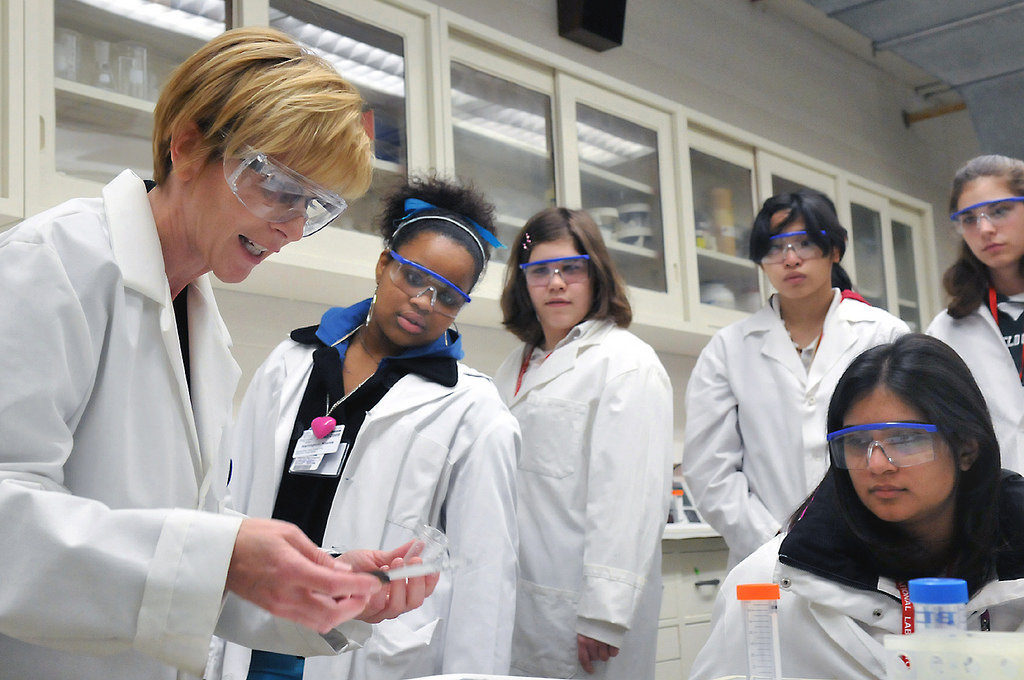
This is an excerpt from The Women’s Brain Book. The neuroscience of health, hormones and happiness. Also published in the UK and Ireland as Demystifying the Female Brain. A neuroscientist explores health, hormones and happiness.
My Research Process for Writing About Brain Science
Over the last decade writing about brain science, I’ve developed a tried and tested method for researching an unfamiliar topic.
First, I’ll read the appropriate chapter in Principles of Neural Science, the neuro-bible beloved by brain geeks the world over.
Next, I’ll run a quick search on PubMed, an online search engine of biomedical literature, to find a recent review of the topic, typically written by a top scientist in the particular field, which will give me a feel for the topic’s controversies and consensus.
Then I’ll feel confident enough to read and understand original research papers.
Finally, I’ll seek out the experts themselves – the scientists, doctors and specialists, who, despite their busy schedules, usually give generously of their time to answer my questions and fill in the gaps of my knowledge.
Gaps in the Literature
However, describing the neurobiology of women’s everyday lives hasn’t always been as straightforward as I expected when I began writing my book.
My meander through the world of women’s health often left me bewildered. Time and time again I’d open the textbooks or scan the literature to find scant research on some of the questions I’d been most curious about.
For example, I assumed the literature would be replete with information on how the oral contraceptive pill affects women’s brains. A 2014 review summed up the current state of affairs with the title 50 Years of Hormonal Contraception. Time to Find Out What It Does to the Brain. Quite.
It wasn’t until early 2017 that the first study on the impact of pregnancy on women’s brain structure was published. Comprehensive maps of the brain during puberty and the menstrual cycle have only started to emerge since 2020. And the first ever brain imaging study on menopause didn’t appear until July 2021.
Despite my best efforts, I was unable to pin down the statistics for how many women suffer emotional turmoil in the days leading up to their period, aka premenstrual syndrome (PMS). I eventually narrowed the range down to somewhere between twelve per cent and ninety per cent.
I was positive I’d be able to tell my mid-life readers whether or HRT would help protect against dementia or clear away their brain fog. Oestrogen protects the ageing brain, but we simply don’t have enough information about the benefits for brain health for any recommendations to be made.
The Historical Bias in Neurobiology Research
Why is the literature so sparse when it comes to neurobiology and women’s health?
There are a number of reasons.
The gaps are partly due to historical bias in research. For decades lab research using animals and human clinical trials were mostly conducted on males or didn’t consider biological sex at all. For example, brain imaging studies were once more likely to record left- or right-handedness rather than whether the brain’s owner was male or female.
But omission wasn’t always malicious or intentional. As a lab-based neuroscientist, I never wrote down the biological sex of the animals or cells in my lab notebook—it just didn’t seem relevant to the questions I was investigating. It might not have made a significant difference to my findings, but without the original data, I’ll never know.
Neuroscience lab research, in particular, has a dismal history mostly focusing on male rodents only. A 2011 survey found there were six males studied for every one female in neuroscience, and pharmacology shared similar statistics.
One reason given for this imbalance was because females with their fluctuating reproductive hormones, introduced too much variability into the data—especially during the fertile years between puberty and menopause. The menstrual cycle was once seen as a pesky feature that added unnecessary variability, and thus, was best avoided, which meant avoiding females altogether. Although it turns out that male human testosterone levels also fluctuate just as much: seasonally (peaking in autumn), over the course of a day and even pulsating hourly.
Gender Inequality in Clinical Research
Clinical research (investigations conducted on humans) hasn’t fared much better. There are a few large, all-female projects such as the Women’s Health Study which I’ll discuss in later chapters, but for many years women were excluded from clinical studies and drug trials altogether. As one critic notes,
Many medical professionals can attest to the fact that for decades, the default human model subject was a 70-kg male.
This is alarming because diagnoses for anxiety and depression are more than twice as common in women than in men, women have more strokes than men, twice as many women suffer from multiple sclerosis, and women have a higher susceptibility to adverse drug reactions compared with men. Indeed, between 1997 and 2000, eight out of ten drugs withdrawn from the USA market were, in part, due to more severe adverse effects in women.
Complex Interplay of Sex and Gender
While it now seems old-fashioned, research on sex and gender was once almost taboo. Neuroscientists were wary their findings would be misused to support outdated stereotypes and discrimination.
You’ll be familiar with some of the stereotypes: because of their ‘female brains’ women are emotional, can’t read maps but can multitask, prefer people to things, don’t ask for promotions, and certainly aren’t cut out for computer coding or STEM careers. Because of their ‘male brains’ men can’t read emotions but can read maps, prefer things to people (except when it comes to p*rn), are more likely to be geniuses, and aggressively seek higher status in the workplace.
One neuroscientist pointed out that
…exploring sex differences was once “a terrific way for a brain scientist not studying reproductive functions to lose credibility at best and, at worst, become a pariah in the eyes of the neuroscience mainstream.”
I spoke to another who said she once believed including sex as a biological variable was “lazy’” This was before she came to the conclusion that studying the impact of a woman’s menstrual cycle on the brain might add a valuable dimension to her research!
The Consequences of Ignoring Sex Differences
The cumulative effect of ignoring sex differences or excluding females altogether has been destructive. Despite women making up half of the world’s population, much of what we know about human biology is based on the male body and medical care for women is less evidence-based or “robust” than that for men. Women frequently experience delays an misunderstandings in diagnoses and treatments.
For example, women are less likely receive timely treatment for heart attacks because their symptoms present differently to men. Similarly, women’s reports of pain are often dismissed, leading to insufficient pain management compared to men. Between 1997 and 2000, eight out of ten drugs withdrawn from the US market were removed due to more severe adverse effects in women.
The Shift Towards More Inclusive Research
To address this imbalance and advance women’s health research, several key initiatives have been implemented.
In 2016, the NIH introduced their SABV recommendations which requires researchers to consider both males and females in experimental design and analysis (unless it’s a single sex-specific study, like pregnancy or menstruation). In 2024 the Australian National Health and Medical Research Council (NHMRC) published its statement on considering sex, gender, variations of sex characteristics, and sexual orientation in health and medical research. The World Health Organization (WHO) prioritises research into the health of women and girls. And President Biden signed a 2022 order directing US$200 million into women’s health research.
It’s still early days but efforts to encourage the consideration of sex as a biological variable (SABV) in data-keeping and analysis have made some inroads, and the last official count in 2020 found 63 percent of neuroscience studies included males and females, up from 29 percent ten years earlier.
A New Era in Women’s Brain Health Research
This recent shift in research focus, more sophisticated thinking about biological sex versus gender, combined with powerful new tools and technologies, makes it an exciting time. Advances in studying live brains in lab rodents, new brain-imaging techniques in humans, data sharing between research labs, international consortiums and biobanks, and machine learning and AI analysis are asking and answering some really cool and complex questions.
A lot has changed in the past decade, especially for women’s brain health which is, I like to say, no longer a niche!
This is an excerpt from the Introduction to The Women’s Brain Book. The neuroscience of health, hormones and happiness.
Share the love
[Sassy_Social_Share]
1 Comments
Leave a Comment
About Dr Sarah
Neuroscientist, Author, Speaker, Director of The Neuroscience Academy suite of professional training programs.
Latest Posts
Free 10 day micro-training in neuroscience

Learn one neuroscience concept a day!
10 simple, bite-sized lessons in brain health, delivered daily to your inbox


Women’s brains were under-represented in the world of EEG analysis. There is finally an EEG database that is 50% female! Sure makes my life easier.